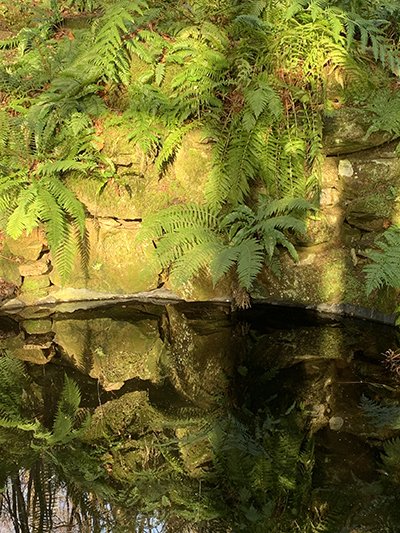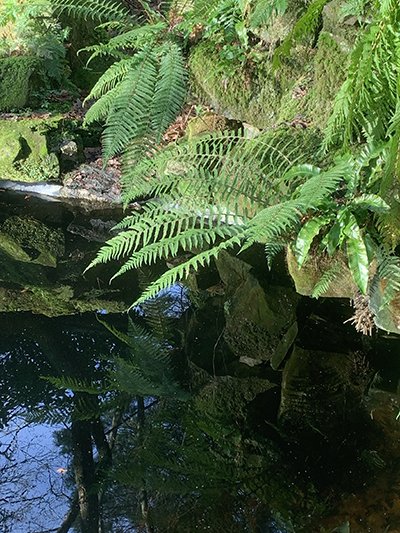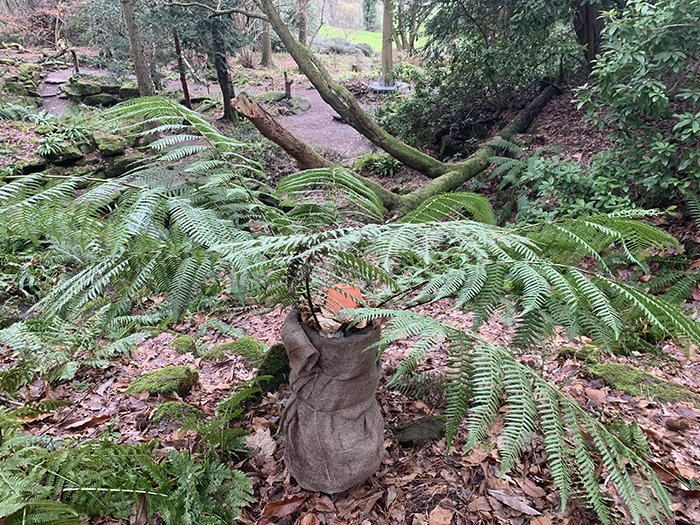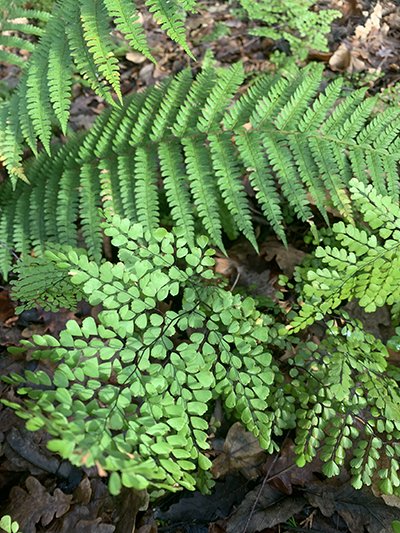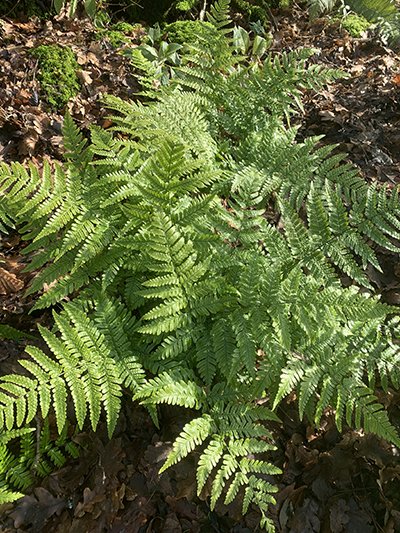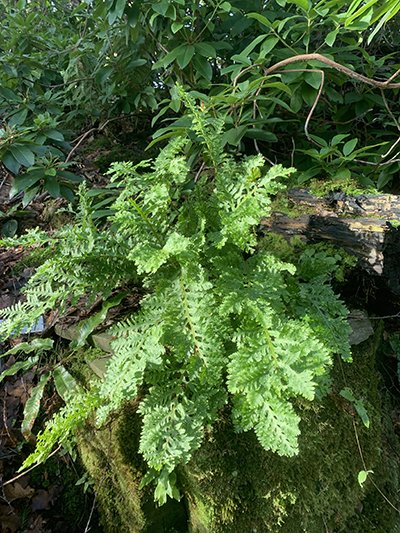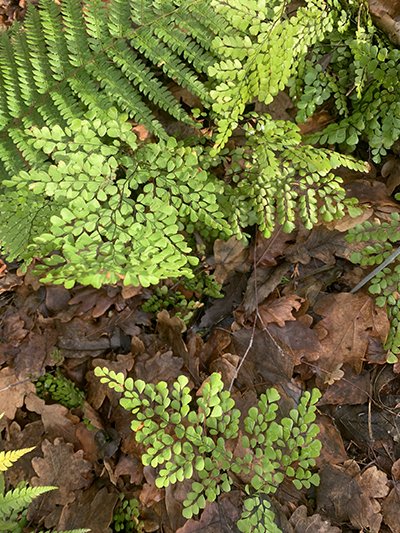Life among the ferns: A Love Story
Jonathan, one of our Garden Volunteer Team, has becoming increasingly interested in our Rock Garden and now looks after our incredible fern collection. Below he explains why he loves these beautiful plants & his hopes for their future at Riverhill….
I’ve fallen in love again, but this time it’s with ferns. I have been involved in the Rock Garden since the restoration started at the end of 2018 and am now looking after it two days a week. A scary moment for someone who’s a relative newcomer to serious gardening and a very steep learning curve. But a very rewarding one.
The decision to plant the Rock Garden with ferns suits it well. The primitive nature of ferns enhances what I like to call the ‘Jurassic Park’ effect of the area, and we’re harking back to the 19th century origins of Riverhill Gardens, the time of Victorian ‘Fern Fever’ when enthusiastic botanists scoured the hedgerows of this country and the mountains and forests of the world for new finds, and there was an explosion of new cultivars.
The aim is to continue this process and make the Riverhill fernery something to be talked of; we’re immensely indebted to Julian Reed and other members of the British Pteridological Society who have been a huge source of help, both patient instruction and donations from their own collections.
One of our Tree Ferns wearing a little winter coat - this protects the trunk from frost and keeps the moisture inside so it doesn’t dry out.
It's a process that will take time – the accepted wisdom is that it can take ferns up to three years to settle in. This year, the focus has been on clearing and planting up the far end, behind the sunken area. It’s a very dry area, which makes it difficult for ferns that are generally moisture loving; as one of the presenters on Gardeners Question Time pointed out, we’re growing ferns in one the driest parts of England. It’s very much a case of trying to identify what ought to work, what might work, and then waiting patiently to find out what actually does work.
The area beyond the Wisteria has been cleared and is being planted to extend the ferns in that direction, the aim being a better integration of the Rock Garden with the lovely sculptural forms of the two Wisterias there.
New ferns have been introduced into the island bed in the sunken area and the walls around it, and existing ones moved around; this is where we can deploy ferns that are best seen close up to be fully appreciated.
Images above: LEFT is ADIANTUM VENUSTUM, RIGHT is DRYOPTERIS ERYTHROSORA. See if you can spot then on your next visit.
I was asked once what do I think about when I’m down there on my own all day. The answer was mostly nothing. I have the inevitable robin for company and the occasional pheasant wanders through. But mostly I am happy enjoying the peace and serenity of the place. The morning when the sun is coming through the trees and playing on the pond is a sight you’d have to go a long way to beat.
This is a hugely fulfilling experience, creating something that can be shared and enjoyed by other people. Ferns are not the most promising material to work with, and part of the process is to guide visitors to what to look for – hence the A board at the entrance and the labels that are appearing everywhere. But when people come round the corner and say ‘Wow!’ (or in one case ‘Flipping ‘eck’!), or when, as happened earlier last year, a young couple spend half an hour sitting in the sunken area drinking it all in, and simply say ‘It’s beautiful’, then I feel we’re achieving something.
Last year, a visitor said to me ‘I envy you your job’. I agree. I envy me my job too!
Images above: LEFT is POLYPODIUM CAMBRICUM, RIGHT is ADIANTUM VENUSTUM
Our Wild Wisteria. W. Floribunda (Japanese Wisteria). The trunk winds clockwise when viewed from above, Chinese Wisteria winds counter clockwise.
The world’s largest known example is in Sierra Madre, California and is more than 1 acre in size, weighing 250 tons, it was planted in 1895.
The National Collection of Wisteria is held by Chris Lane at Witchhazel Nursery near Sittingbourne. They do hold pre-booked open days where you can view the collection.


